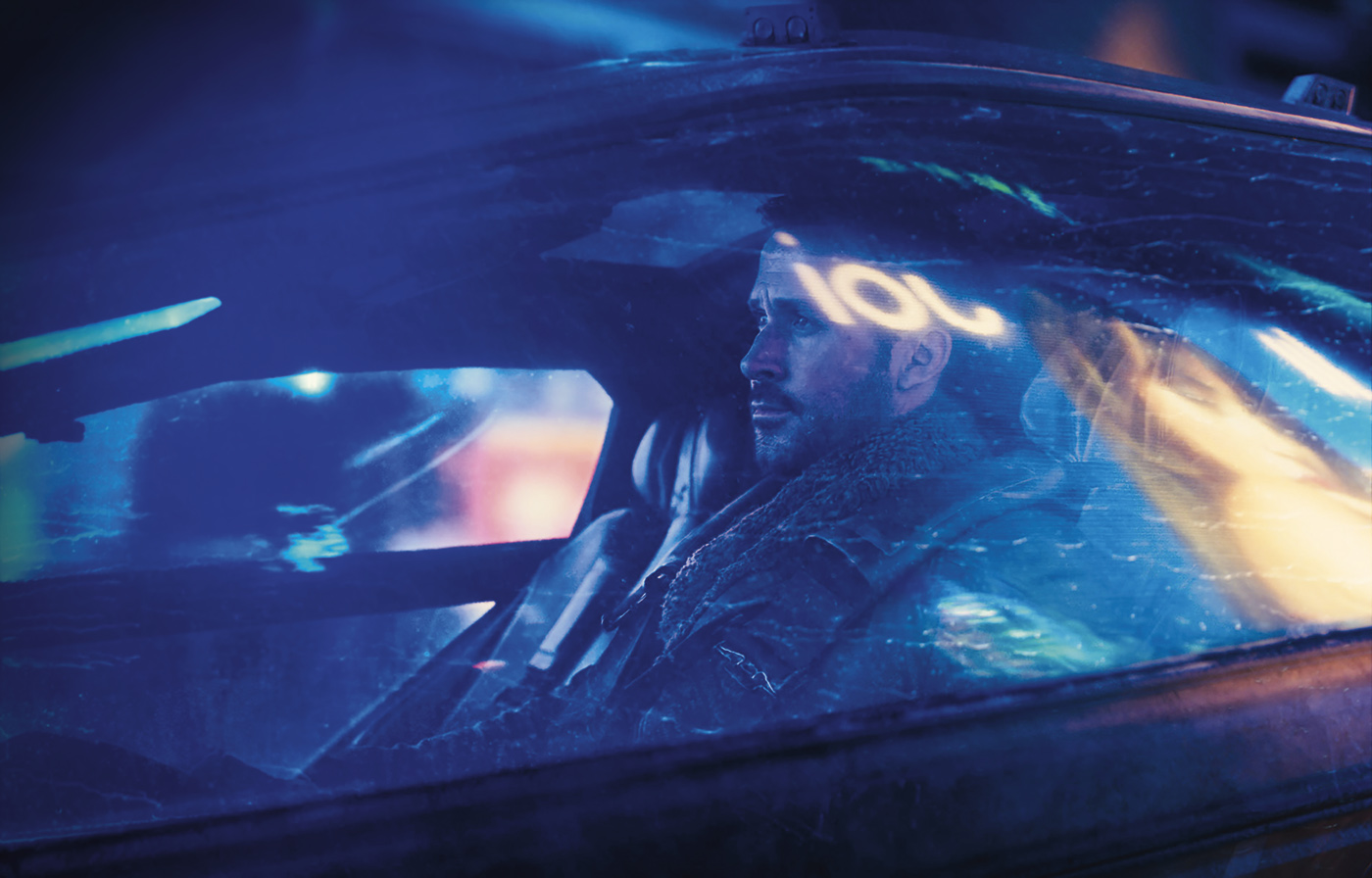Roger Deakins, ASC, BSC, reveals what lies beyond ‘Ridleyville’ in Denis Villeneuve’s new Blade Runner 2049.
Ridley Scott’s 1982 masterpiece, Blade Runner, derived from Philip K. Dick’s cult novel Do Androids Dream of Electric Sheep?, hit theaters during one of the most fertile summers ever for science-fiction/fantasy content. The director’s follow-up to Alien debuted after The Road Warrior, Star Trek II, Poltergeist and E.T. had cleaned up at the box office, and was, amazingly (in hindsight), a box-office dud.
Fortunately, it soon underwent a critical reassessment, with viewers discovering the groundbreaking movie (which went on to spawn book and computer-game sequels) on home video. Blade Runner’s gorgeous cinematography (by Jordan Cronenweth, ASC, with additional photography by Steven Poster, ASC) and cutting-edge analog visual effects (supervised by Douglas Trumbull and David Dryer) became a well-mined source of inspiration for innumerable productions; it also fueled interest in the nascent print movement of “cyberpunk.”
But Scott has long resisted a return to what his crew dubbed “Ridleyville,” until now. With Blade Runner 2049, he becomes an executive producer, handing over the directing reins to Denis Villeneuve (Arrival). The sequel’s story (details of which have been kept tightly under wrap) appears to blend the old and new: a cop named K (Ryan Gosling) is caught up in a mystery that carries the potential for global disaster. So he tracks down long-missing detective Rick Deckard (Harrison Ford), who decades earlier had vacated the same job currently filled by the younger man – that of a “blade runner,” responsible for “retiring” renegade humanoid replicants.
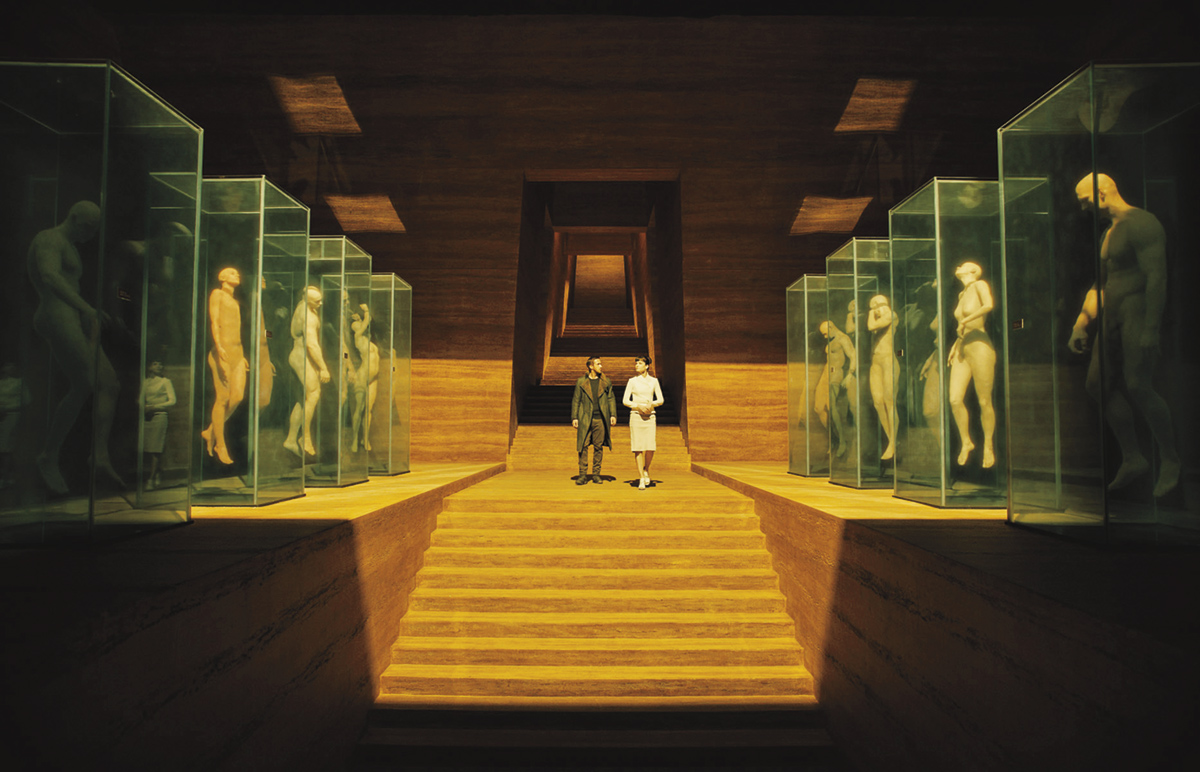
Blade Runner 2049 reunites Villeneuve with his cinematographer from Prisoners and Sicario, Roger Deakins, ASC, BSC. And as the 13-time Oscar nominee recalls: “I was naturally very interested by the idea, and Denis’ ideas for it. The film has elements of continuity, like with the Deckard character, but there wasn’t any attempt to emulate the original’s unique style. I’m simply not Jordan Cronenweth, so I wouldn’t choose to light this film in that way.”
A perpetual acid-rain landscape was an iconic aspect of Scott’s urban vision for 2019. And as Deakins adds, “that worked because it was a kind of film noir set in Los Angeles. This time there’s more visual variety as we venture outside the city, which now feels like what Denis described to me as ‘Beijing in smog.’ It’s a much sparser look than the original film, but there were a lot of specific design influences. During the boarding, we studied everything from Japanese wooden architecture to a Brutalist look that Denis liked, partly inspired by some buildings in London where we had initially scouted and considered shooting.”
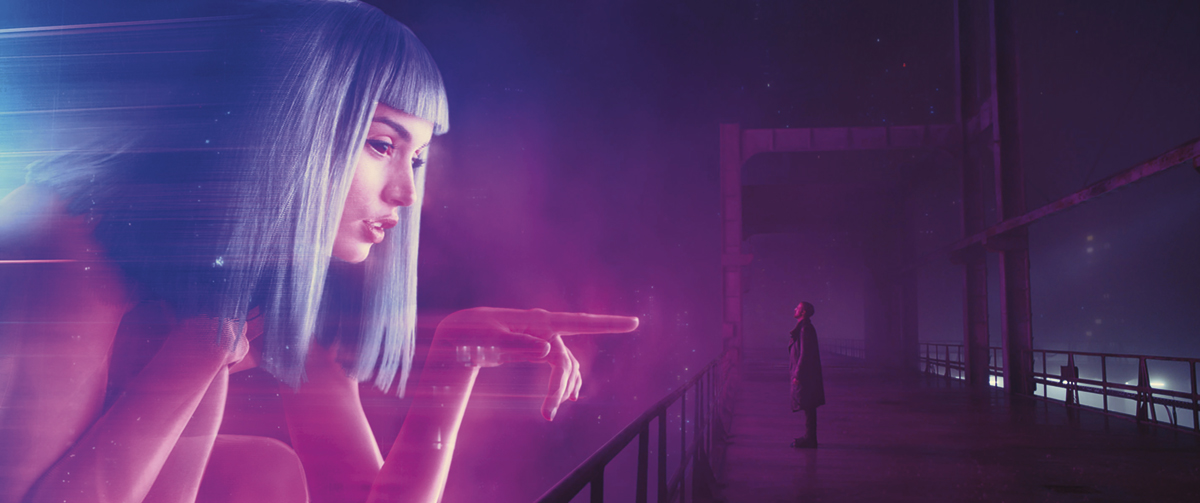
While the original Blade Runner was shot almost entirely on Warner’s backlot and stages, 2049 was based in and around Budapest. “Ridley had done The Martian there [at Korda Studios],” reports production designer Dennis Gassner, “so when London fell out, we abided with some structures found in Hungary, along with what we could build on stage. One thing that Roger, Denis and I all share is the desire to control every element. That’s what this film is about – the first one too, though they had different tools from our CG and digital matte paintings – creating a very precise impression, along with scale.”
When Gassner began working with Villeneuve in Montreal, he asked for a single word that described the director’s concept. “He paused, then said, ‘Brutality,’” Gassner reveals. “That word also sums up winter in Montreal – pictures don’t do it justice,” he smiles.
Gassner says weather elements affected his approach to architecture as well. “The original’s Tyrell building showed Ridley’s monolithic approach to the world, so we tripled that, expanding to a harsher architectural style evolved in response to the battering elements,” the designer continues. “While this is a speculative future – our thought was hybrid tech, a pseudo-Anbaric [transmission] power source – it doesn’t mean technology has made things easier. The situation is such that things still seem very challenged.”
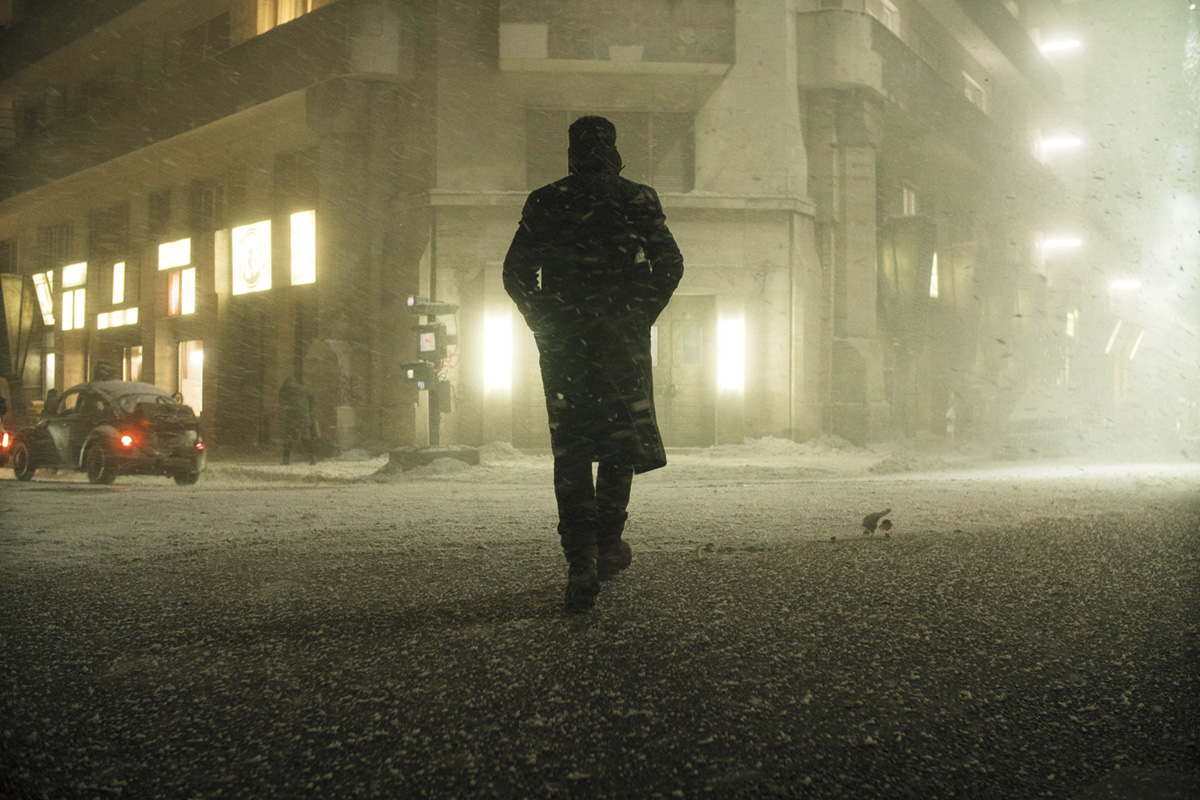
Blade Runner’s famed visual futurist, Syd Mead, who developed the spinners – along with the so-called “retrofit” style of future L.A. – also contributed design work for 2049’s Las Vegas sequence. With significant credits on Tron, 2010, Aliens and the first Star Trek feature, Gassner describes Mead as “practically a metaphor for himself. You know the quality of what you’re going to get, along with his signature, which was the look for Ridley’s original film.
“With franchises,” Gassner adds, “you have to honor the established elements while meeting audience expectations. I’m about to do my fourth James Bond film, and acknowledging the efforts of Ken Adam and others is a big part. But we still need to make it new for ourselves, and on 2049, that meant expanding the poetry that Denis brought.”
Deakins and Villeneuve concurred on shooting with ALEXAs (XT Studio, augmented by the Plus and Mini cameras) and capturing in 3.4K to Codex in MXF/Arrriraw. “We decided to shoot this open-gate, like Sicario,” Deakins shares. “I did shoot tests with the ALEXA 65, which produces fantastic images, but for this project it just didn’t feel right.
“People bandy about all these numbers in regard to resolution but there’s a lot more to consider rather than the amount of data,” Deakins notes about differing opinions on image quality. “Important are such things as latitude, noise level, chromatic aberration and, most importantly, halation that can be created by the sensor. I like lenses that are clean and sharp, so I went with the Zeiss Master Primes, which are fast and also don’t flare the highlights. I don’t like image artifacts [like flaring] that can, though not always, distract from the narrative.”
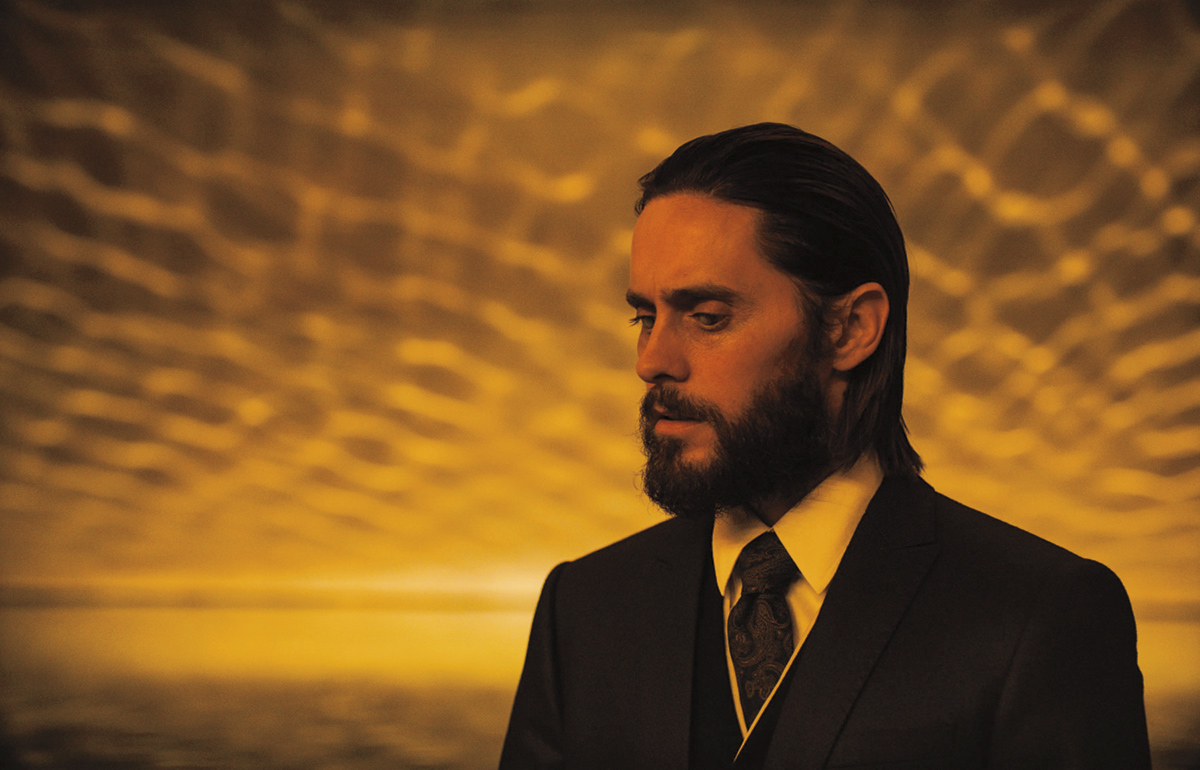
One strong visual element in 2049’s narrative emerges in scenes featuring Niander Wallace (Jared Leto), the new maestro of replicant manufacturing. “He has the ability to create any mood in his facilities, and that shaped the tone and texture of the lighting,” Gassner describes. “When Roger saw our designs, he seized on water as being a useful tool for infusing the lighting with a unique look that developed out of the story itself. Everything in lighting is about character for Roger. When we first worked together on Barton Fink, that meant integrating practical and motivating lights to create a synergy, of which Roger is a master. This film justified his history and knowledge of storytelling with light.”
Deakins felt the environment inhabited by Leto’s character was all about a feeling of ‘sunlight,’ even in closed-off interiors, with illumination always seeming to be alive and in motion. “We’re often lighting very flat surfaces, panning lights or using chasers to create this effect,” he notes. “I also had a number of sets utilizing lights projected through water or bouncing off the surface of water to create caustic patterns of ‘sunlight’ on the walls.”
Other scenes (not specified to avoid spoilers) exploited virtually the whole range of lighting tools. “One whole set was lit by just eight two-foot LED fixtures,” Deakins adds, “while another used 120 10Ks on three 25-feet-in-circumference circular tracks. All were on chasers for the particular moving-light effect. Elsewhere we lit a set using 50 Skypanels, another using 280 Betweenies and, for another, 250 Space-lights, so the volume and approach varied throughout.”
Visualizing the exterior landscape often required waiting on Mother Nature. “We wanted a very gray atmosphere for the city, often with rain or snow, and flatly refused to shoot anything in the sun,” Deakins laughs. “Some of that was done on stage, where we had Gerd Nefzer, our German effects guru, create heavy misting effects. We also built rather large sets on the backlot and then waited for the right weather.”
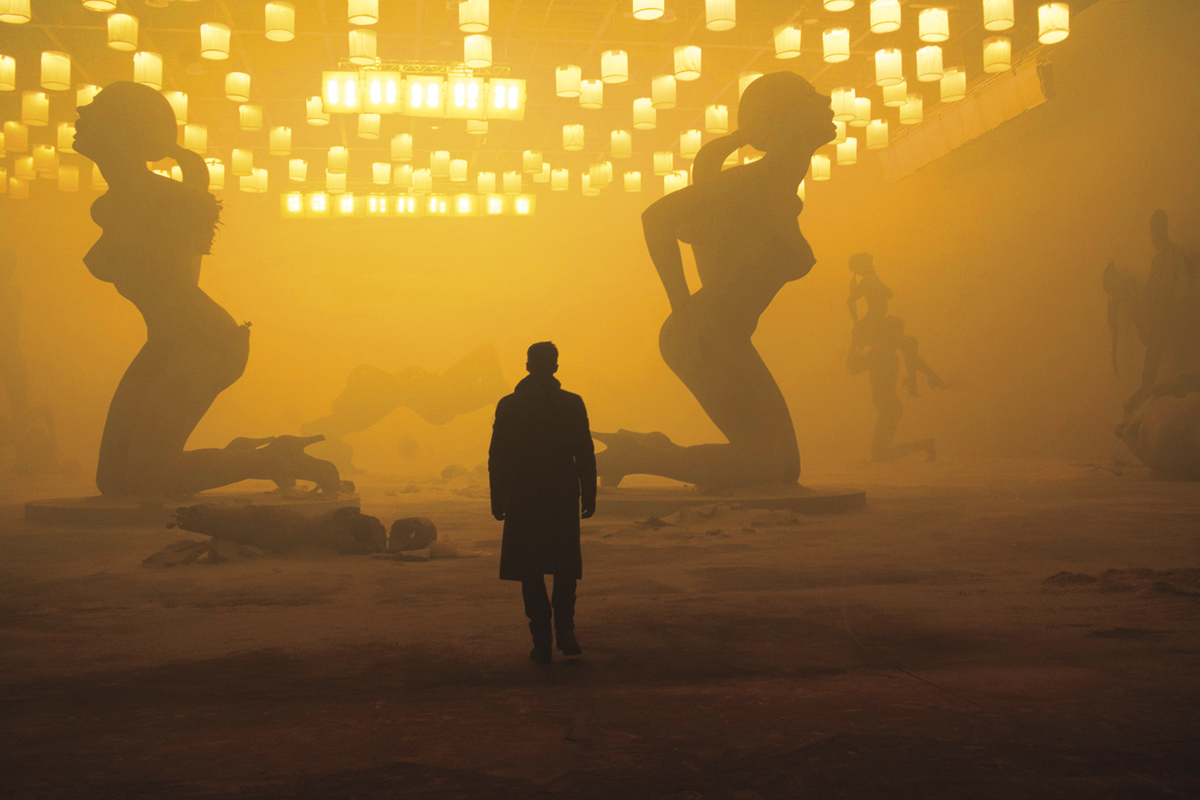
When K finally meets up with Deckard, it’s in a dusty, ochre-colored Las Vegas (shot in Budapest.) “That orange environment was done in three different ways,” Deakins remarks. “The opening part was on stage and, for this, I had Tiffen make some specific red filters for in front of the lens. While most of my lighting was tungsten-based Spacelights, there were some 20 Maxi-Brutes gelled green to give a feeling of yellow light against the predominantly red filtration.
“The second section was an interior shot on location in Budapest,” he continues. “For this we had HMI sources from outside the windows, which were in turn diffused and gelled with the same color gels that we had used for lens filtration previously. Then, for the third part of the sequence, we had a very large set that used a couple hundred open-faced 2Ks and sixty 10Ks, with all those lamps bounced and gelled to maintain our color. All of the color scheme was controlled in camera and this gives it a reality I doubt it would have had if left to post.”
Deakins continues to employ a single LUT, which he has favored for years. “I made slight adjustments with [DIT] Joshua Gollish to skew it just a bit one way or the other, but I use basically one LUT and do as much in camera as possible,” he adds.
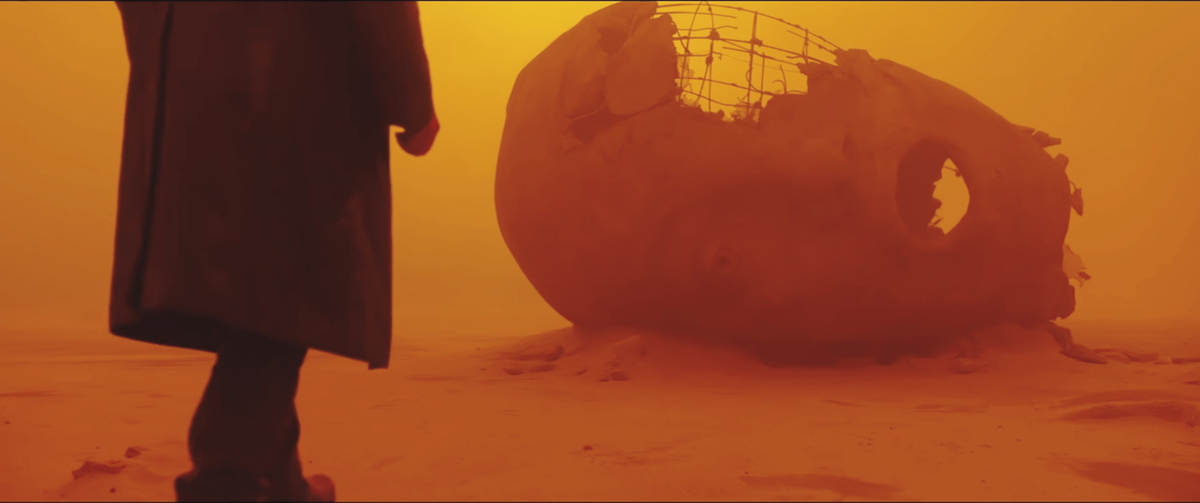
Gollish, who has worked on all of Deakins’ digital features, reports that monitor calibration was as important as ever to the cinematographer, and to digital workflow consultant James Deakins.
“From their first digital film, In Time, we have been able to maintain the highest level of accuracy on displays for different departments, in various color spaces from ITU-Rec709 to DCI-P3,” Gollish explains. “We brought our own equipment as well as Efilm’s to achieve a monitoring solution from set to dailies. We vetted camera media to the most precise level possible, tracking SMART status and the number of LBA blocks written before any camera ever rolled on a test shoot, and ensuring integrity from Codex XR to CFast mags. We used DoD level of encryption and data security near set to back up the media, as well as data clearing after the shoot.”
Gollish says James specifically oversees the workflow to ensure that Deakins’ work – from capture to editorial to VFX to final color – is represented as intended. “We implemented a common show look with various units shooting all over the world,” he adds. “Where there were DIT’s involved, we made certain that data-handling procedures and color pipeline were parallel to ours – identical in the case of second unit, down to hardware and monitoring.”
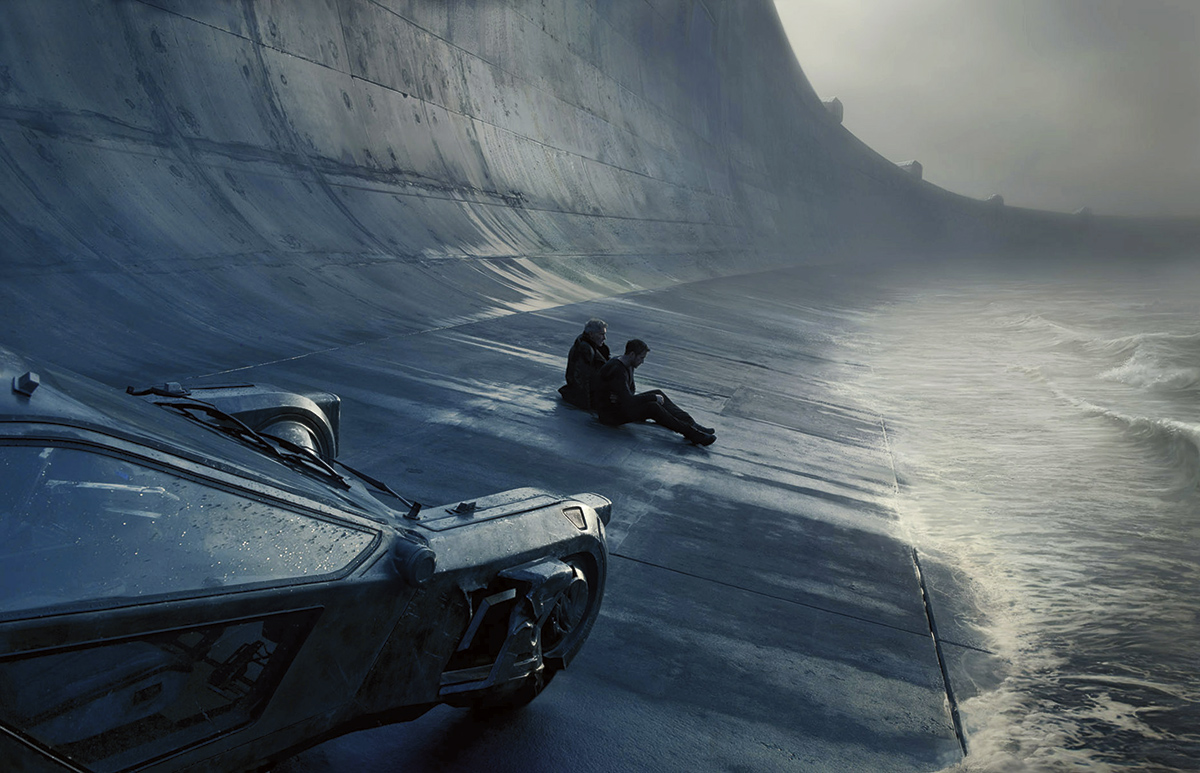
One globetrotting unit – ranging from the U.S.A. to Iceland and Spain – was headed up by aerial DP Dylan Goss, a Sicario vet who found himself operating under a directive that was a first for him after more than twenty years of flying.
“Much of this film was unconventional for aerials in that we essentially chased storms and rain the whole time,” Goss reflects. “Our job was to find the Blade Runner 2049 look out in nature so it matched the studio look of the main unit. And the look mandated by Roger came with the caveat of capturing those shots without a post re-light in mind – so we absolutely avoided direct sun and flat light. Roger and Denis implied that some leeway was allowed regarding the previs, but getting the look in camera was non-negotiable.”
Work first got underway above Mexico City – chosen for its Brutalist architecture – to depict K’s spinner flights through Los Angeles. Goss says, “We sent select takes on a secure system and received very specific feedback about what worked. We quickly became focused on the edges of storms. When that weather would break, we might have atmosphere and cover, but also hopefully some decent backlight or rim light.
“We would lift off with rain spinners going and race toward what we hoped was soon-to-break darkness,” he continues. “For shots with movement in relation to a flying vehicle, we flew a second helicopter to serve as a tracking marker, giving the camera a proper target against which to make moves. That helicopter would be replaced in post, but our moves remained authentic.” The team later ventured to Nevada’s Valley of Fire, making sure to arrive ahead of the weather. “It is pretty rare to get rain there,” Goss admits. “Having the lease to hold for certain conditions – and to end up capturing those red rocks with all the diffused rain and haze in-camera – was amazing.”
Goss worked with aerial specialists at Team5, using their Shotover system for single-camera setups. At the request of VFX supervisor John Nelson, he also developed a variation on the company’s Hydra 6 camera array. It was primarily for use on scenes shot in Iceland, which represented a portion of K’s journey down the California coastline of 2049.
“We had unparalleled support from ARRI, [which] wrote custom software to drive the hand-built, quickly-engineered array the way I needed,” Goss reveals. “Meeting the needs of John and Roger had us wiring multiplexed lens drives to control modified lenses and building a one-off enclosure to accommodate ALEXA Mini camera bodies.”
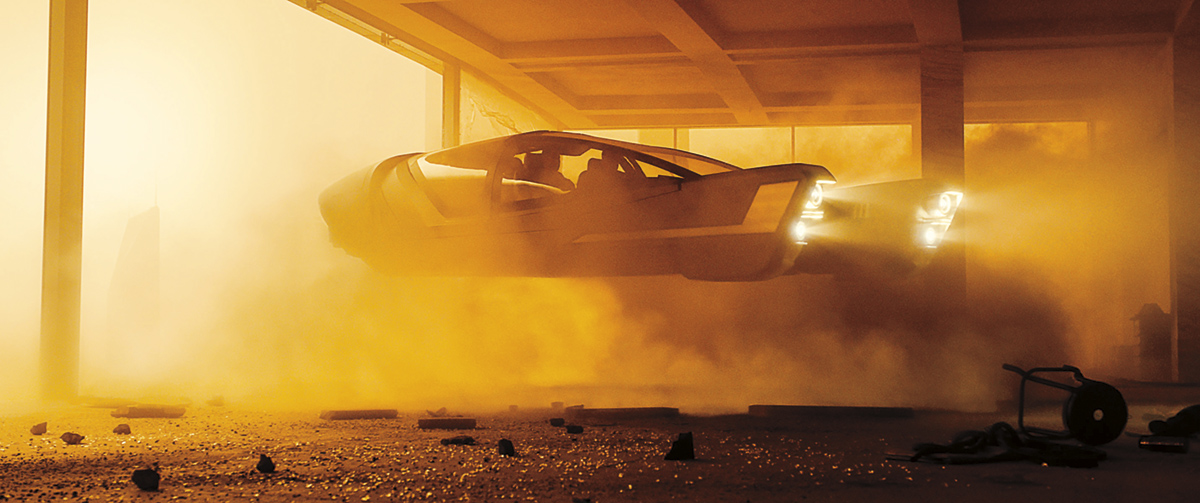
The spinner itself proved to be a major design effort. “Our lead spends much of the film in it traversing this environment,” notes Gassner. “The graphic strength of that car became what I call the pattern language of the film itself, helping define the differences between the original and the ‘present day’” of 2049.
At one point, a spinner crash-lands in water. “We had talked about going to Malta for the tank, but the expense ruled that out,” Deakins reveals. “Production found another local studio and built an exterior tank. We pumped a lot of smoke around that and, since it was late in the year, by 8 p.m. the water would start to steam, which helped us with the look we were trying to achieve.
Special effects built a track that allowed the craft to slowly descend, as if sinking, and there were wave machines involved, so it was quite a big production.”
Visually, the scene posed a particular challenge for Deakins. “It’s supposed to be dark, so I didn’t want to put lights outside the craft but we still needed to see where we were and to see the action involved. We decided to go for it. We said let’s just make it so the lights coming from the vehicle itself are the light sources, creating pools of light surrounded by complete darkness. I think this effect makes the scene more scary but it was also quite scary for me.”
The scene was also one of the few times he utilized a Technocrane on the production. “This film really echoed Sicario in its fairly minimal camera movement and not a lot of elaborate action,” Deakins relates, adding that Aero cranes and remote heads were more common, augmented by drones and some Steadicam.
The spinner’s flying scenes were achieved with the cars placed on gimbals. “Sometimes we shot those against backings, which usually got replaced by VFX,” Deakins states. “We built a lot of interactive lighting gags into those shots, especially when the vehicle is under attack.”
Deakins says he looked back on some of his past films to employ a proven technique that involved putting large elastic bands on wires to propel practical light sources at speed across the vehicle, “to give the impression that some form of weapons fire is passing right by them,” he explains. “I’d used it to dramatize passing lights when someone is looking out a window from aboard a train, but here on this film – where we often had very elaborate and technical solutions involving programming lights and very complex dimmer work – it seemed funny that something so simple to set up worked so well.”
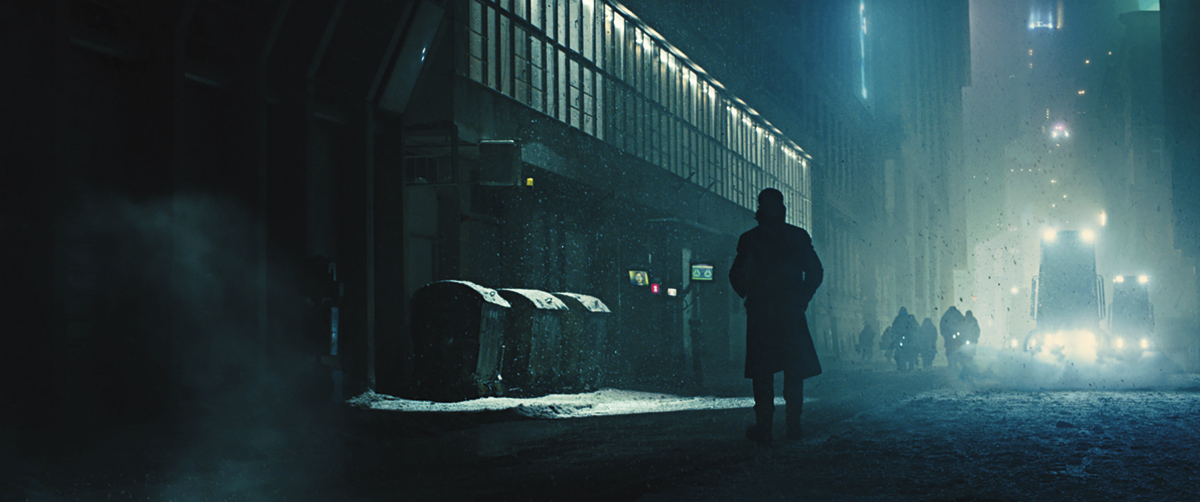
Green screen was occasionally mandated on 2049, but Deakins resists using it as a default solution. “Green screen can kill the naturalistic look of lighting,” he adds. “On Unbroken’s bomber set, VFX wanted green screen all around the set, but it would have interfered with the light entering the cockpit. So we surrounded the bomber with white silk and lit through that. [For 2049] we’d often surround a set with grey cyc, or put bounce material there to get our look. VFX does have to deal with rotoscoping, but that’s much easier now than it used to be. For our backlot exteriors, I thought green screen was fine, because it doesn’t affect the foreground, but I won’t compromise the look when working in close quarters.”
Deakins remained closely involved during postproduction, overseeing the DI with Villeneuve at Deluxe’s Efilm. Colorist Mitch Paulson notes that even with the mix of stage, locations and VFX, 2049 still had a very consistent look, relative to his efforts in the DI.
“Roger lights and exposes within that [one LUT] framework, very much the way he would use a film stock,” Paulson states. “Scenes cut together very well because of the planning that went into shooting. There were the inevitable small differences, and Roger, who was at every session, would have me massage the images to his satisfaction.”
Paulson employed Autodesk Lustre for the different deliverables required for 2049, which included 3D and HDR. “There are technical differences when you work in Dolby Cinema or Dolby Vision for home entertainment versions,” the colorist explains. “HDR lets you have significantly deeper blacks and much brighter whites – but it’s ultimately up to cinematographers and directors how much they want to take advantage of that. Roger’s approach was really all about preserving the look and feel of the P3 version.”
Deakins notes that the highlights in HDR can pop in distracting ways, so suppressing the highlights was a good way to make that version conform to the regular release. “For the IMAX version, I’m adding a bit more color,” he says. “Most of those cinemas use a silver screen, so the edges fall off in density, and color gets washed out.”
Outside of Skyfall, Deakins has not been involved with spinoffs and sequel projects, but he stresses that Blade Runner 2049 offers a distinctly different treatment than the original. “It’s really not a conventional sequel at all in my mind,” he concludes. “I don’t know what people are expecting, but this isn’t just another version of what they saw in 1982 – it is very much Denis’ film.”
by Kevin H. Martin
photos by Stephen Vaughan, SMPSP Framegrabs courtesy of Warner Bros.
CREW LIST
Director of Photography
Roger Deakins, ASC, BSC
Steadicam
Pete Cavaciuti
A-Camera 1st AC
Andrew Harris
DIT
Joshua Gollish
Still Photographer
Stephen Vaughan, SMPSP
Publicist
Larry Garrison
AERIAL UNIT
Aerial Dir. Of Photography
Dylan Goss
Aerial Technician
Justin Webber
DIT
Paul Maletich
